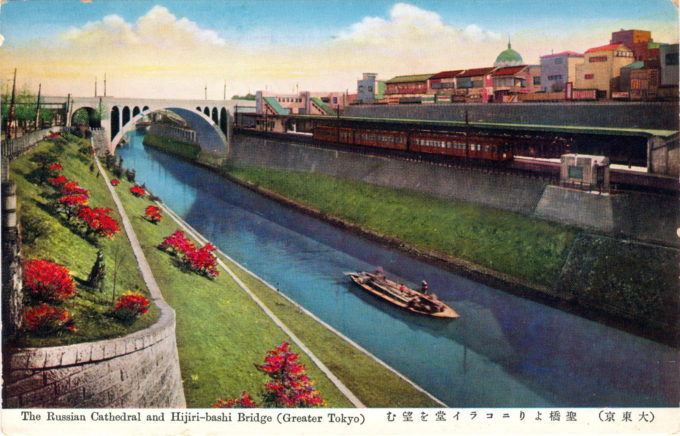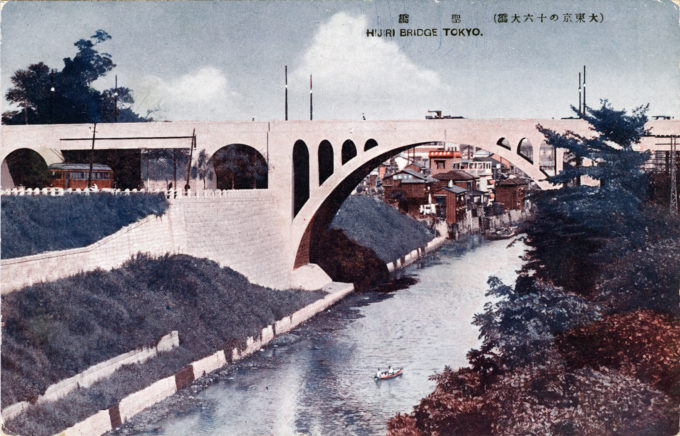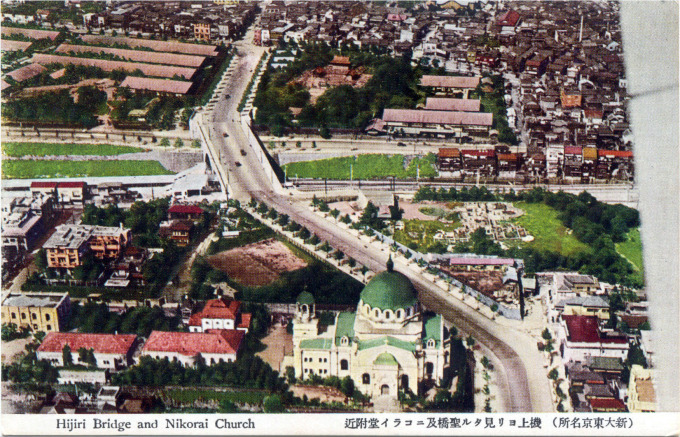See also:
Nikolai Cathedral, Ochanomizu, c. 1920-1930.
Kanda River.
“Built as part of the reconstruction of Tokyo after the 1923 Kanto Earthquake, this reinforced concrete bridge [completed in 1929] over the Kanda River was designed by Yamada Mamoru. Yamada (1894-1966) was one of the founding members of the Secession Group, which took its name from the Viennese Secession movement but was inspired by German Expressionism in its designs. The parabolic curves of the arches certainly suggest an Expressionist influence.
“The bridge was given the name hijiri, meaning ‘sage’ or ‘saint’, because it links the Confucian temple of Yushima Seido and the [Russian] Orthodox Cathedral of the Holy Resurrection [over the Kanda River].”
– The Architecture of Tokyo, by Watanabe Hiroshi, 2001

Hijiri Bridge and Ochanomizu Station, c. 1940, from the Ochanomizu Bridge. In the distance can be seen the dome of the Nikolai Cathedral.



